Introduction to the Types of Overhead Cranes
Knowing the difference between overhead cranes can have several benefits for your business.
Overhead cranes can greatly improve production, efficiency, and even safety within your work space.
The (4) types of overhead cranes include gantry cranes, jib cranes, bridge cranes, and monorail cranes.
By reading the following article, you will get a brief, informative overview of all of these different types of overhead cranes.
You’ll know enough by the end of this article to decide what type of overhead crane would best suit your needs and who you need to get in touch with to get your overhead crane.
Gantry Cranes
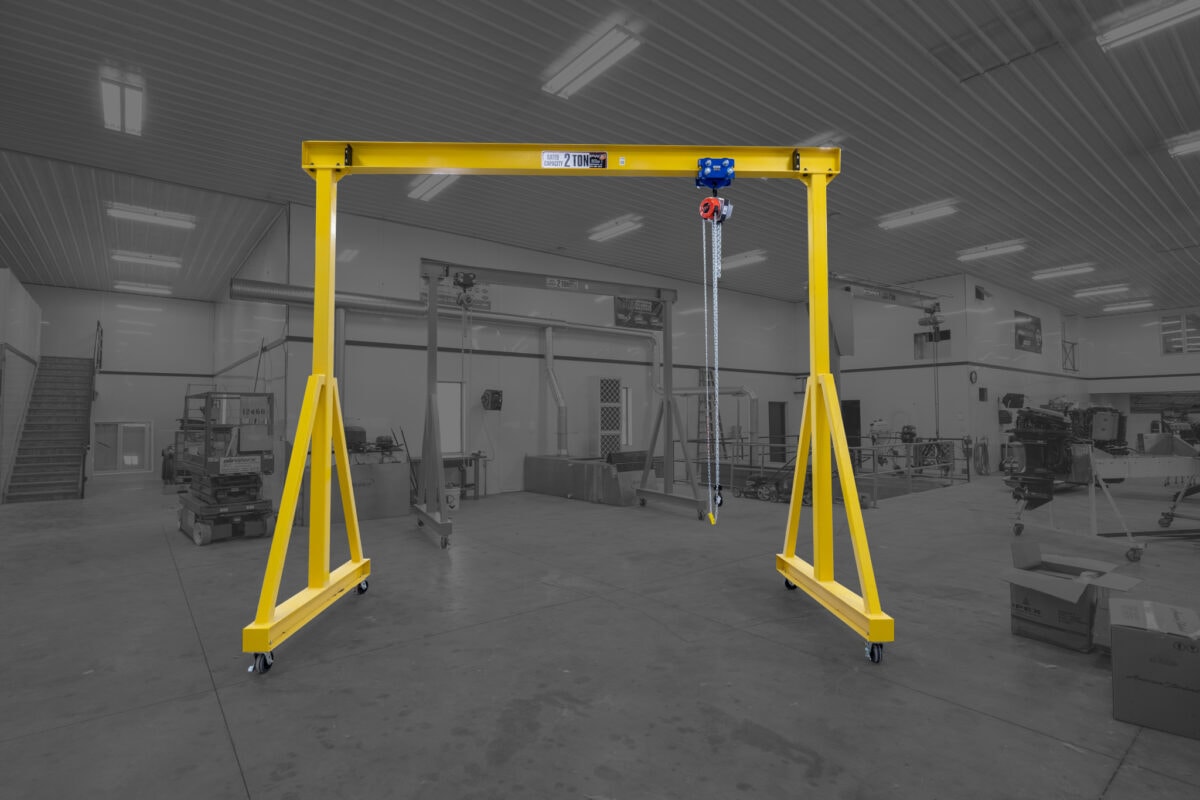
What is a gantry crane?
Gantry cranes are a type of overhead crane that is built on a gantry
A gantry is a movable framework that supports large equipment. Some of the common things it supports are railroad signals, rockets, and (hey you guessed it) cranes!
Putting two and two together, a crane on a gantry is a gantry crane.
Gantry Crane Uses
Gantry cranes come in a range of sizes – from something that fits in your garage to something that could lift your garage, house, and everything in it.
The really big gantry cranes are most commonly seen at shipping and container yards, rail yards, and places where they form big concrete slabs.
The smaller gantry cranes are much more common for garage use and smaller fabrication shops.
The smaller gantry cranes are typically on heavy duty casters so they can be easily moved around. This makes them extremely versatile and mobile.
If you’ve got a need for a mobile overhead crane system, and don’t plan on moving more than a few tons then the smaller mobile gantry cranes are an excellent choice.
If you have a need for an outside overhead crane that needs to move many tons and would be fine on a track system, then a larger gantry crane might suit your needs
Gantry Crane Cost
The best part about the smaller gantry cranes is that they are fairly inexpensive.
For around four thousand dollars, you can get a gantry crane that will move several thousand pounds.
This really makes them a viable option for home mechanics and hobbyists that have a lot of weight to move or hold.
The larger gantry cranes can get much more expensive.
The biggest gantry crane in the world, the Taisun Crane, has an estimated build cost of around $40 million dollars. But if you need to lift a barge one hundred feet above water then you can’t beat that price.
Jib Cranes
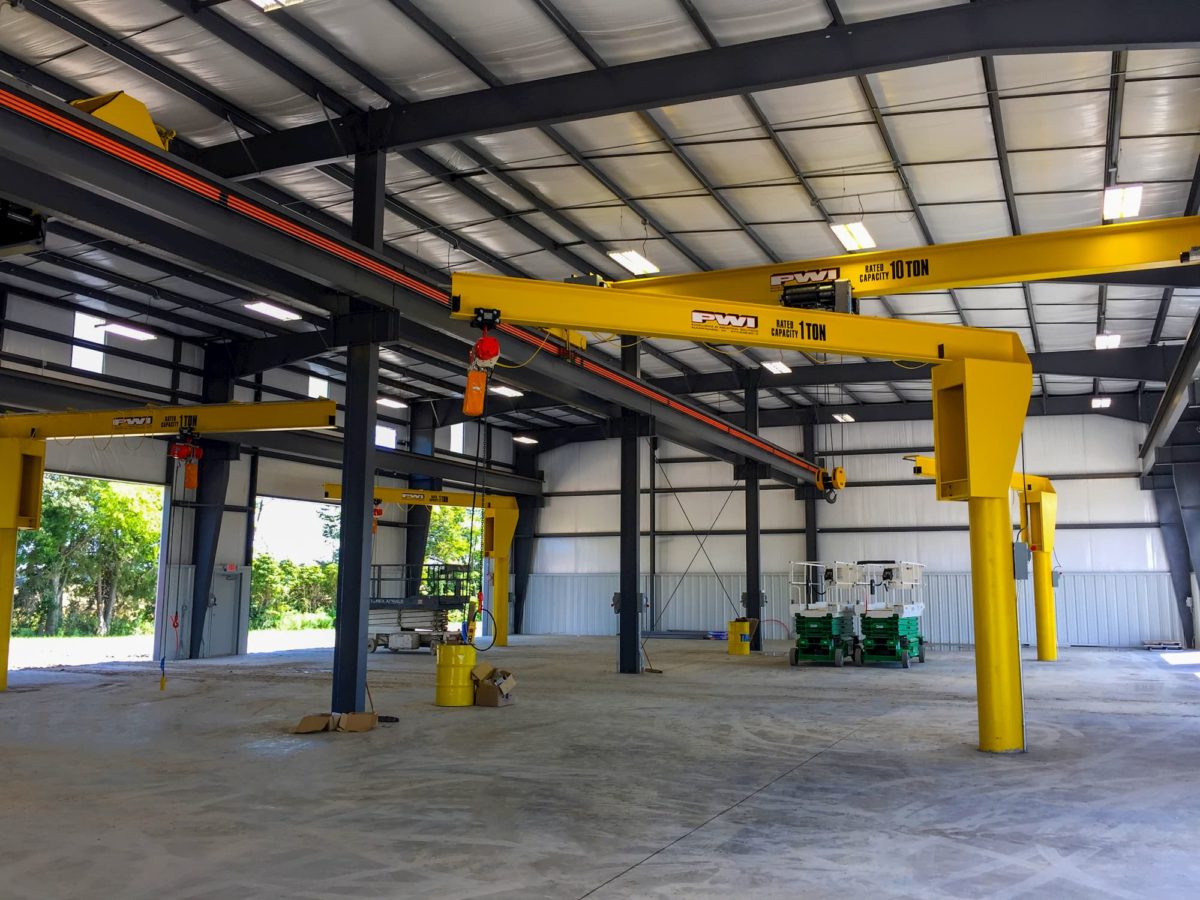
If you’ve never seen a jib crane before, they look kind of like an upside down letter L.
They are usually floor mounted via their own dedicated support or to a building’s support beam.
Jib cranes are usually equipped with an electric chain hoist and are able to be rotated by hand. This makes them very efficient at doing many lifts over short distances.
Jib Crane Uses
These types of cranes are typically used in production and assembly lines, factories and mines.
Their lifting power is not as great as that of some of the other cranes on this list (usually capping out at one ton).
Still, due to their high reliability and ease of use, they make for an excellent choice for short distance needs.
Jib Crane Cost
A one ton floor mounted jib crane will cost you around three thousand dollars.
The more weight you need it to lift the more expensive it will be, but remember that they don’t go much higher than a few tons.
Bridge Cranes
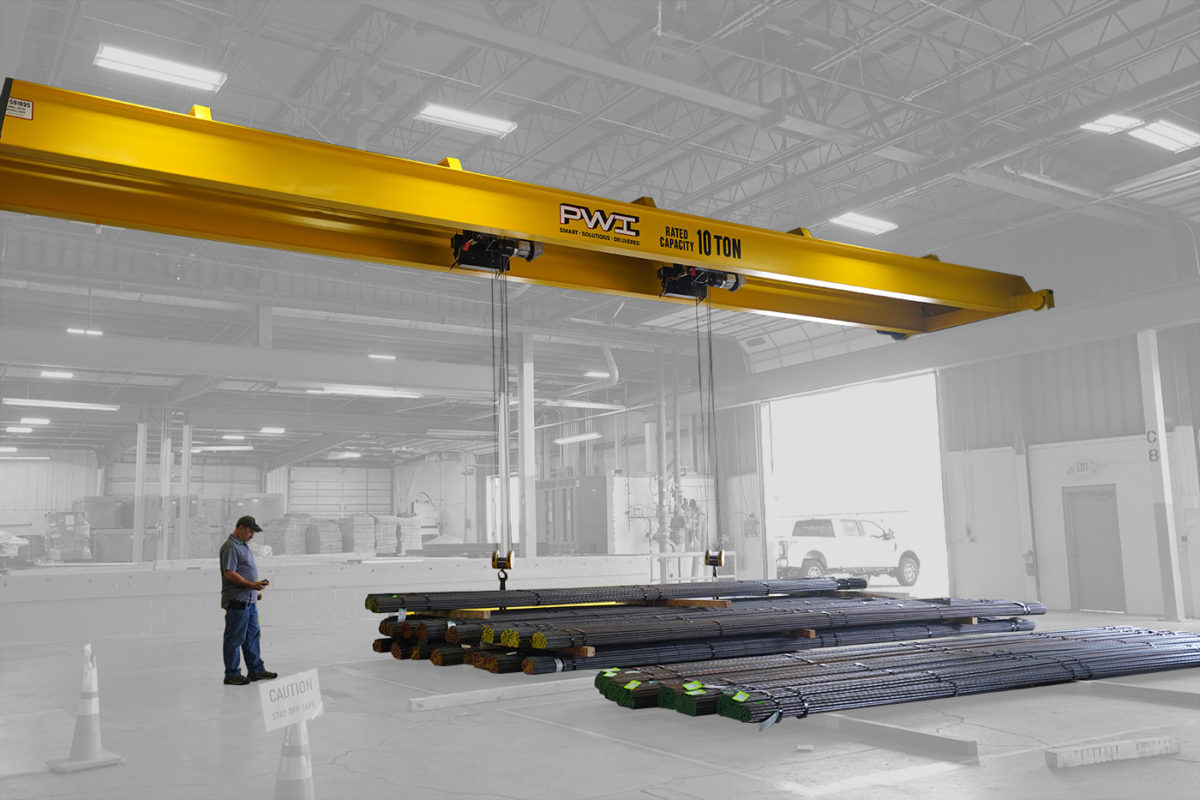
Bridge cranes are what you would most likely think of when thinking of an overhead crane.
This type of overhead crane is built inside of a building and will normally use the structure of the building as it’s support.
An overhead bridge crane almost always has a hoist which will move left or right. A lot of times these cranes will also run on a track, so the whole system can move forward or backwards through the building.
Bridge cranes come in two common variations; single girder and double girder.
Bridge girders are the beams that span across each runway.
Single Girder Crane
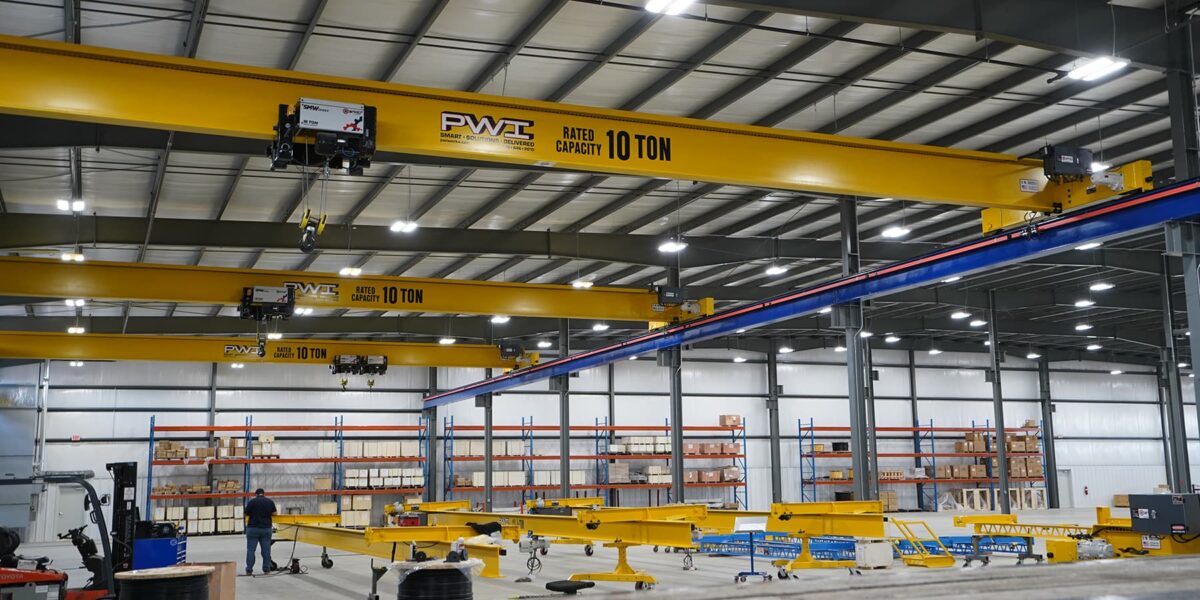
The single girder bridge crane has one I-Beam or “girder” which supports the load.
These cranes are typically lighter, and lift less weight than their double girder counterparts.
They can still lift quite a bit compared to some other cranes, but their load capacity usually caps out around 15 tons.
Double Girder Crane
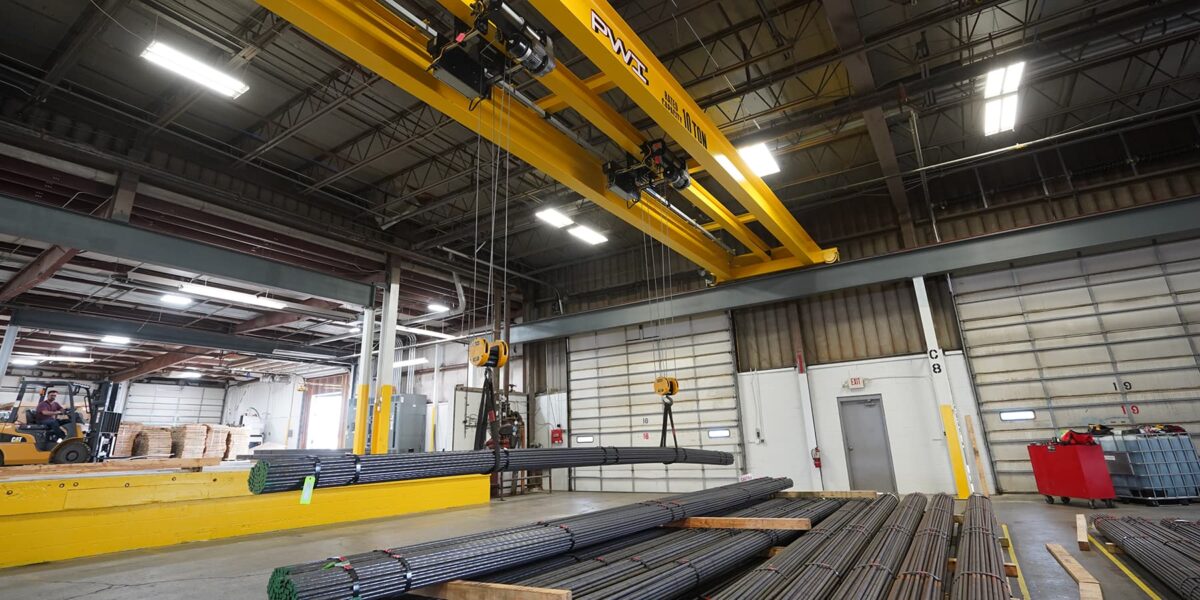
Double girders are bridge cranes that have two i-beams or “girders” which support their load.
These are the heavier type of bridge cranes and they have more lifting capacity than single girder cranes.
The biggest double girder crane load capacity caps out around 250 tons.
Bridge Crane Uses
Many industries use bridge cranes from automotive factories to paper mills.
If you need to move something very heavy inside of a building, you can’t beat a bridge crane.
They are highly reliable and make work inside buildings much more efficient.
Bridge Crane Cost
The single girder bridge cranes are the less expensive of these two cranes, but also don’t have as much lifting power.
So if you need to lift very heavy things, you may have to spend the extra money to get a double girder bridge crane.
Monorail Cranes
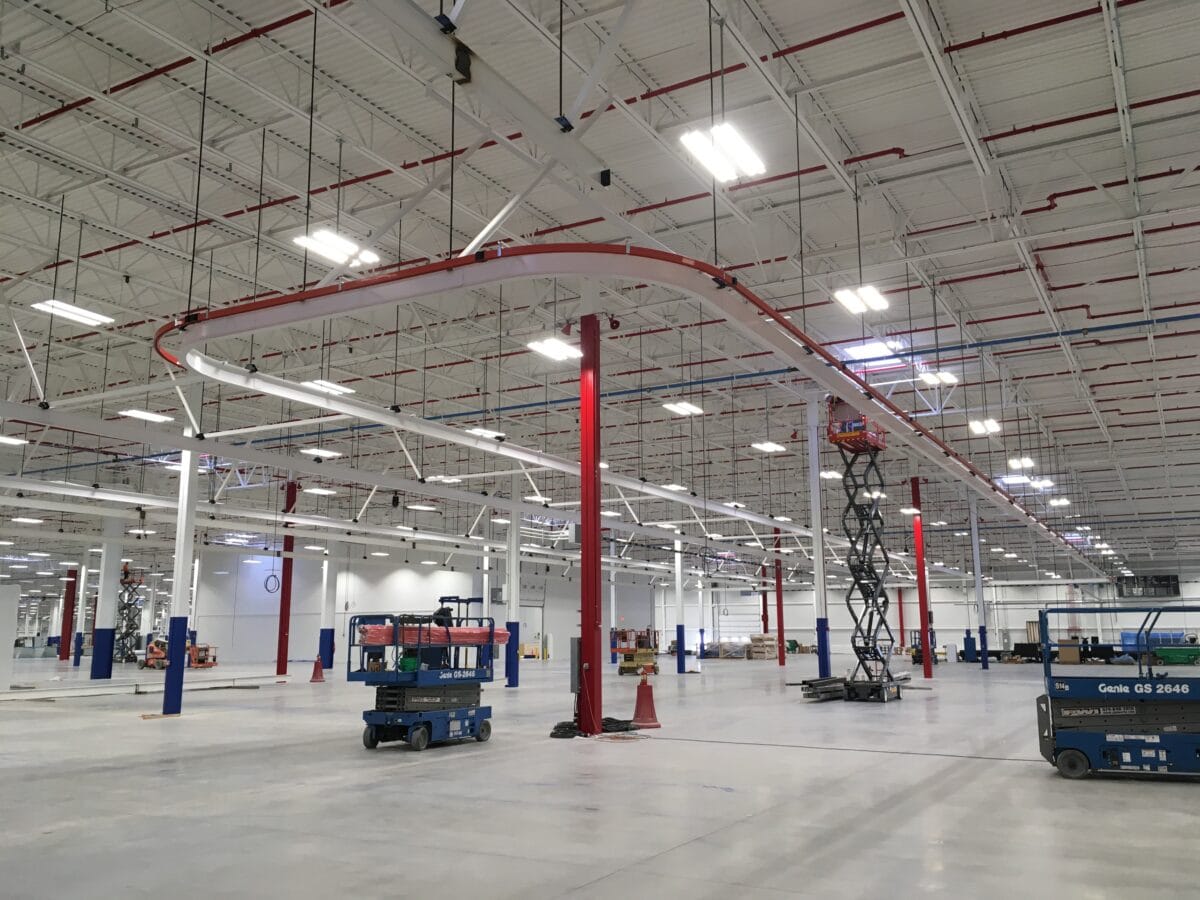
Monorail cranes are pretty unique looking overhead cranes.
Their hoist doesn’t move side to side like that of a normal bridge crane, it just goes up and down.
The interesting thing about monorail cranes is that the rail they run on can be formed to adjust for curves.
The ability to move around curves is a major advantage when you need to work around certain structures in your factory.
Uses
Because they can adjust for some unique situations, monorail cranes are often incorporated into assembly lines.
Now because they have to move along some interesting curves, they don’t have the same upper lifting capabilities that a normal single girder bridge crane.
The upper limit I’ve seen for monorail cranes is roughly six tons, with most of them being less than that.
Costs
The cost of a monorail crane is largely dependent on how much track you need and how many curves will be needed. The other cost factor is, as with every crane, how much you need it to lift.
Conclusion
After having read all of this you should definitely feel more comfortable talking about overhead cranes.
But the biggest benefit is now you’ve got a fairly good understanding of many different cranes and how their uses and capabilities could benefit your business!
We’ve touched a little bit on the cost of each type of crane too. Not only what kind of price tags we expect to see but also what some of the long term costs might look like.
Now as much knowledge as you’ve got right now about these different types of overhead cranes, there is always more to learn.
Or maybe you’ve got some questions about how any of these types of cranes could benefit your business or suit your needs.
For more information on these cranes I highly recommend talking to a member of the PWI team by calling (574-646-2015).
They’ll be able to help you determine what will suit your specific needs and give you estimates on the crane or cranes that will make your business more efficient.
You can also get a free quote on PWI cranes.
See Also
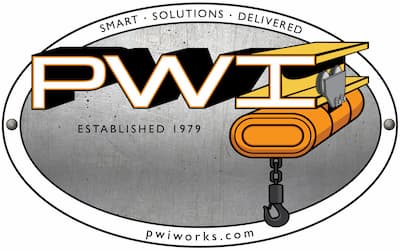
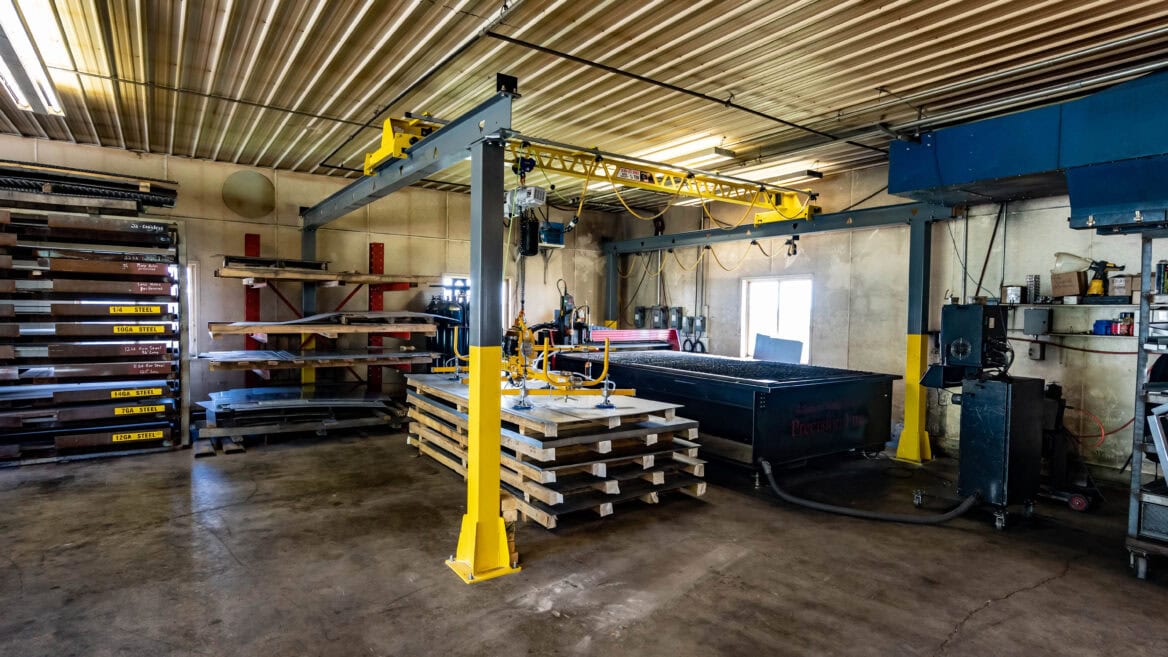
![New Construction vs Mezzanine [PDF]](https://pwiworks.com/wp-content/uploads/new-construction-vs-mezzanine-pdf-464x600.jpg)